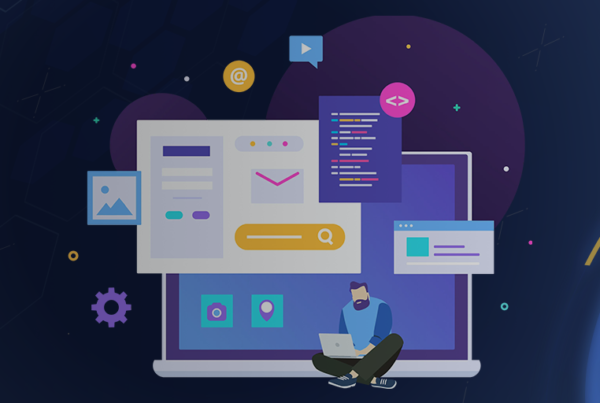Tech disruption promises to improve many aspects of our lives, but our current crop of software is not entirely capable of leading this transformation. A decade-long growth opportunity lies ahead, but first, software itself must evolve in order to transform other industries. Incremental changes will only take us so far.
Information technology is set to lead us into a new, improved era in the years to come. Digital technology promises to disrupt many industries, potentially adding tremendous value to business operations and improving customer experiences. We are being promised connected lives, smart cities, self-driving cars, delivery drones, 3D printed objects and intelligent machines that will closely mimic humans. But beyond the sexy stuff, there’s a more apparent, practical need—useful commodity functionality essential to the average user.
What’s interesting about this anticipated change in the technology landscape is that transformative technologies will likely emerge from new, niche players rather than well-established enterprises. Very soon, many existing technologies will be rendered obsolete because of their inability to handle our need for fluid, pervasive computing experiences. Traditional software faces the same tough challenges, as well as being highly disintegrated. To build out computing capabilities that can meet our future needs, software as we know it is going to need a complete overhaul.
Why Build from the Ground Up?
I discussed in my last blog post the need for standardization to allow businesses to fully leverage unified communications. Of course, the entire technology landscape cannot be rebuilt from the ground up, at least not immediately. But an enterprise, whether small or large, that seeks a unified, collaborative experience across different media, functions and operations would rather have a standardized ecosystem to work with than a disintegrated and fragmented environment. This is where enterprises will likely realize the need to build their required functions from scratch for more sustainable outcomes.
What modern collaboration platforms are good at is offering useful plug-ins that integrate different functions. But how far can they really go in supporting our evolving need to stay connected everywhere and all the time? From the perspective of enterprises, modern software frameworks limit their ability to build out all the desired functionality in one place within the existing ecosystem. So, enterprises have no choice but to use third party plug-ins to integrate a variety of software tools. However, as the competitive landscape expands, and digital business demands far more complex technology capabilities, such as cloud, data analytics, mobility and social integration, that mode of operation will prove futile. Businesses will need to rapidly build out capabilities unrestricted by operating systems and their interfaces. This will be essential to developing technologies such as advanced machine learning, robotics and artificial intelligence, which are set to power the future of digital business.
Enterprise Software Will Prove Inadequate
Globally, enterprises invest millions of dollars every year in collaboration software. Despite massive investments of time and money in deployment, learning and training, businesses still suffer setbacks from inadequate features. Inadequate features could mean too many features, making the software hard to use, or insufficient features which adversely impact productivity.
As businesses increasingly shift toward cloud computing and real-time analytics, flexibility and scalability will be key to any platform’s success. Software will have to be capable of tailoring solutions to meet the rapidly evolving needs of businesses and their customers. Enterprises will also need to strategically think about those capabilities which they may not need now, but will be critical in times to come. Businesses that set long-term strategic goals will emerge as leaders, while those that disregard future needs will ultimately perish.
Digital technologies will drive the future of many industries over the next decade, adding tremendous value to the global economy. But the current approach of adding novelty features and minor incremental improvements to legacy software will not fulfill the needs of the future. Third-party plug-ins and integration apps have already reached their limit. They strain (and sometimes fail) to handle our current information processing needs, and when there are billions of sensors and connected devices everywhere, it will become far too much to handle. Eventually, businesses are going to realize it won’t work out. Forward thinking business will realize it early and decide: F*ck it. Just rebuild it.






















